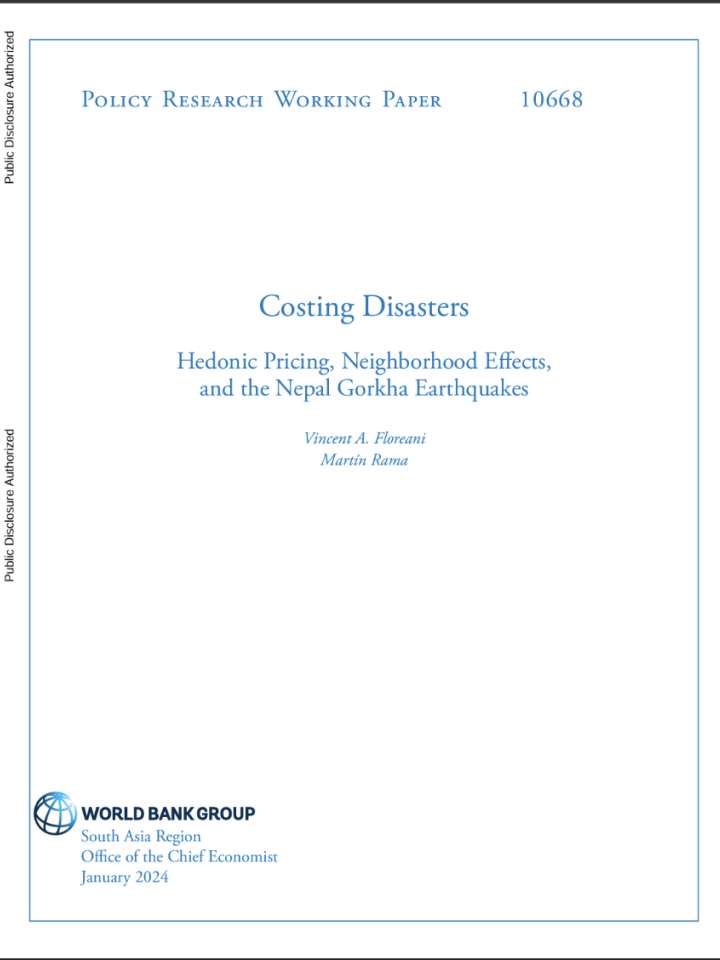Costing disasters: Hedonic pricing, neighborhood effects, and the Nepal Gorkha Earthquakes
This paper proposes a microsimulation approach to rapidly estimate the overall cost and distributional impact of disasters. Because housing prices reflect the present value of a specific bundle of living conditions, local earnings opportunities, and local access to services, their change in the aftermath of a disaster can be interpreted as a measure of the welfare cost incurred by households. This paper borrows concepts from both poverty analysis and urban economics to explore this concept.
Key findings from the publication include:
- A disaster affects the value of dwellings both by making them less livable – or not livable at all – and by undermining the opportunities and amenities around them.
- The estimated impact is comparable to that of the official assessment. However, its spatial distribution is significantly different due to the pivotal influence of neighborhood effects.
- Indirect impact can be captured by estimating hedonic pricing regressions for housing that explicitly incorporate neighborhood effects.
Explore further
